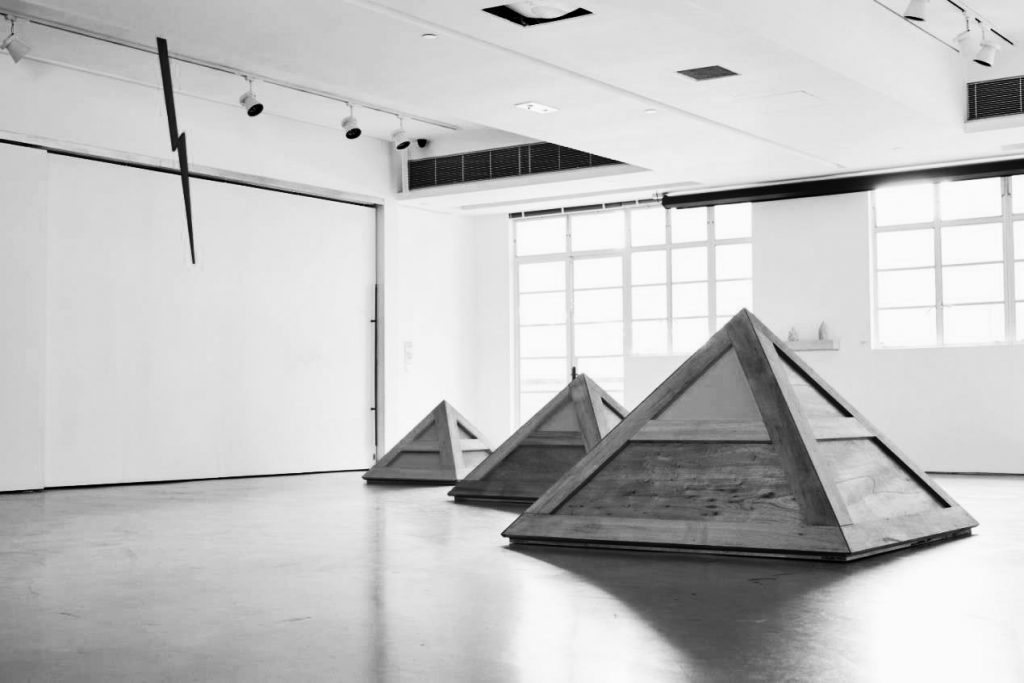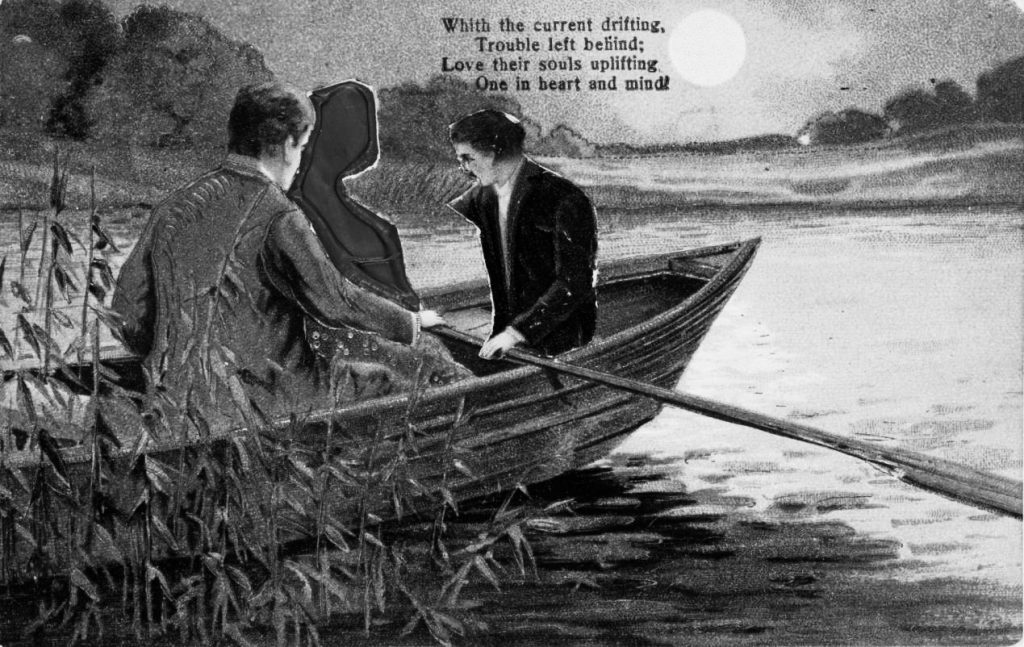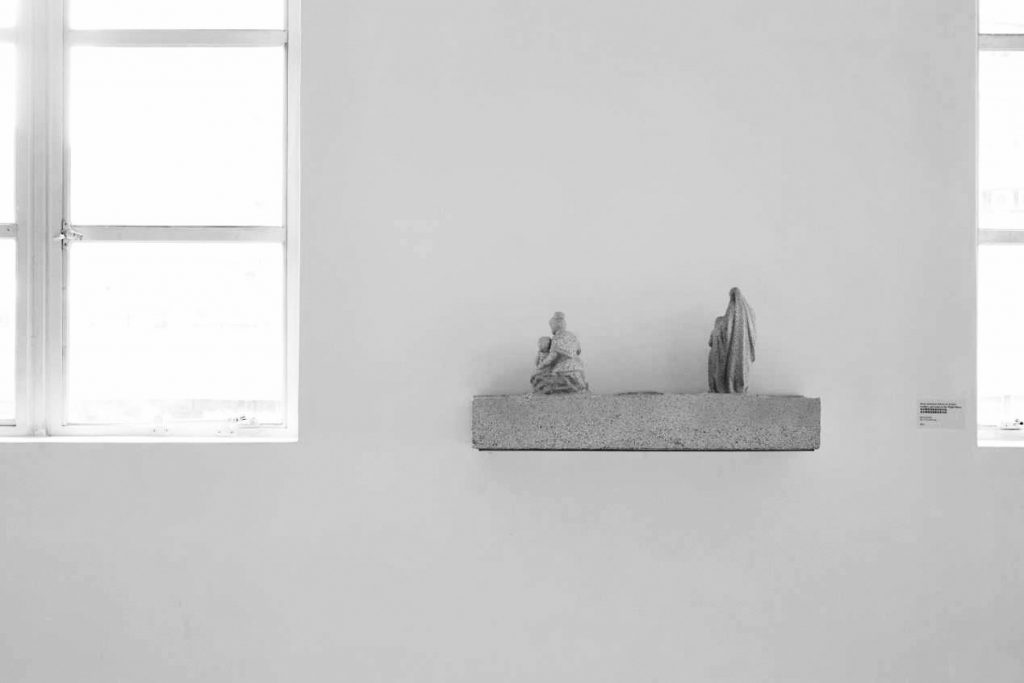The Meaning of Life
Wong Wai Yin ( Doris ): Without Trying
Spring Workshop, Hong Kong
20.08.16 – 16.10.16
Translated by Richard Dobson
After a five-year absence, the Hong Kong artist Wong Wai Yin’s solo exhibition Without Trying came as a big surprise – surprise at the works’ simple forms of expression, transcendent content and thematic coherence, and at the way in which the artist has rejected grand narratives and the use of imposing images. Wong Wai Yin’s works pick subjects with which we come into contact on a daily basis – even the trivial things that permeate the world – as a way of overcoming the fears buried deep in our hearts, and giving expression to the question that has faced humanity throughout the ages: What is the meaning of life?
This series of new works shows how Wong Wai Yin’s life convictions and creative attitude have changed after becoming a mother. For Wong Wai Yin, these five years were a learning process. She wants to overcome fear – vacillating between creator and mother. Many works in the exhibition are related to destruction and rebirth, which could not help but lead me to think of the relationship between birth and creativity. In writing it down, I have the opportunity to dig my own grave, contrasting birth with creativity’s desire for extinction, because both birth and creation are rare and precious; it seems like a process starting from scratch.
The fear in Don’t Resist the Lightning ( installation, 2016 ) is lightning that extends from the ceiling to the artist’s head. Wong Wai Yin breaks through the stalemate via research and training, and has readjusted to her new identity ( as mother ) on her life’s path. She has transformed the accumulation of experience and emergent spirit into the inspiration for her work.
Existing items are often used in Wong Wai Yin’s works and different media are used to create them, such as painting, sculpture and collage… Putting this into practice has always been her approach to making art commonplace, and making art from the commonplace. For example, as early as 2004 she used everyday paper products in the Sculpture non Sculpture exhibition. However, the breakthrough, in Without Trying, is to bring everyday items to the metaphysical level of ‘being present in the moment’. You See Me, Though I Am Not Here uses old-fashioned romantic postcards, purchased online, that show people boating and dancing. Wong Wai Yin cut out a figure from each scene, and moved it to another scene. The person rowing the boat on the postcard loses the person with whom they have been gently conversing, and the dancer’s lover disappears. Does the misplaced identity also reflect Wong Wai Yin’s struggle between her identities as an artist and a mother? Because of the concerns engendered by these two identities, she has not been able to throw herself wholeheartedly into either of these two roles, and this has generated feelings of guilt. The identities of the artist and the mother are also two aspects of the individual and society. Traditionally, is not the meaning of life simply to carry on the family line? Marriage and birth cannot be separated from the social fabric. As a result, Wong Wai Yin’s works express a struggle of identity, and show that society and the self are also incompatible.
Many of the works in the exhibition also contain elements of destruction and rebirth. The appearance of miniature pyramids in Wish You Were Eternal destroys the works of the past and implies the destruction of old ideas and shackles, by cutting them up and placing them in the wooden pyramids. The arrangement of the three pyramids mirrors the actual layout of the pyramids of Giza. According to legend, the pyramids were the tombs of the ancient Egyptian pharaohs. The ancient Egyptians had a deep-rooted concept of the ‘afterlife’, which was regarded as the continuation of earthly life. And since earthly life was considered to be ephemeral, they made earnest preparations for life after death while they were still alive. If the shredded artworks also have an afterlife, does this represent a little of the artist’s old self, or is it a desire for creative transformation? The exhibition also directly confronts worldly facets, and the works The Dog That Won’t Be Trained ( video, 2016 ) and This Song Makes Everything Bearable ( recording, 2016 ) relate to the fears in life, such as fear of dogs, of learning French, of singing. Wong Wai Yin uses a toy Alsatian in a dog training course. In the video you can hear Wong Wai Yin constantly issue instructions to the dog, but because the dog is a toy, her attempts ultimately fail.
Wong Wai Yin really put a lot of effort into this exhibition, with three possible outcomes. The previous traces of her work have not necessarily been destroyed, as with Wish You Were Eternal or the doomed-to-fail The Dog That Won’t Be Trained, as well as This Song Makes Everything Bearable. In this exhibition, only the two works A Centimeter Taller Than You ( video, 2016 ), the sole collaboration with her husband Kwan Sheung Chi, and stepping on food from home in Clearing Ten Thorns ( video, 2016 ) could be considered successful.
The finishing touch that brings the subject to life was Some Missions Belong To Grandmother, And Some To The Virgin Mary, which was placed against the wall with the figures’ backs facing the audience. On the one hand, the colour of the work almost blends in with that of the wall; and on the other, there is the understated expression of the work itself. Grandmother and the Virgin both face the wall, teaching children to read. The work relieves Wong Wai Yin’s anxiety and lives in the words of her teacher, Lu Zhenguang: ‘Everyone must find their own place.’
As long as we are brave enough we do not have to allow the abstract, metaphysical terms of life dominate our lives. Everyone can shape themselves, as if they are their own artists. It’s just like the philosophy of nihilism, which states that the existence of life has no objective meaning. Wong Wai Yin’s work is a vigorous, positive nothingness. This is because life is composed of trivial items, such as the fortuitous phenomena of evolution, such as bodily organs interacting with each other, the digestive processes of the stomach, the peristalsis of the large intestine, and the urge to trample on food, or sing a song. So some attempts may be successful and some may fail, while yet others end up somewhere between the two. Because there is no fixed intrinsic meaning, we are free to create meanings of our own. That is Wong Wai Yin’s belief, and it is also what causes the viewer’s heart to throb.
尘世间的生命意义
《黄慧妍:不要太努力让事情发生》
Spring工作室
2016年8月20日 – 2016年10月16日
阔别五年,香港艺术家黄慧妍交出的个人展览“不要太努力让事情发生”是个大惊喜。惊喜在于作品的表达形式简易、内容超然以及主题上的连贯性,抛开巨型叙事,不采用宏大意象。黄慧妍的作品挑选日常触及的对象,甚至是琐碎品,穿透尘世,克服埋藏于心底内的恐惧,表达人类亘古面对的议题金生命的意义是什么?
这一系列的全新作品呈现黄慧妍成为母亲后,于生活信念与创作态度的转变。这5年来,对黄慧妍来说是学习过程。她要克服恐惧金徘徊于创作者与母亲之间的地带。在展览中多件作品跟毁灭与重生有关,不期然驱使我想到生育与创作的关系。书写下去,我有机会自挖坟墓,将生育对比成创作欲的灭绝,由于生育与创作同样比珍贵难得,恍如从无到有的过程。恐惧如同《不要抗拒闪电,即使看来要劈在你的头上》( 装置,2016 )那一道由天花板延续到艺术家头上的闪电。黄慧妍突破胶着状态,透过一系列的研究及训练,重新调节自己在人生路上的新身份( 母亲 ),而且将当中积累的经验及浮现的灵式转化为作品灵感。

Wong Wai Yin, Wish You Were Eternal, 2016, installation view. 黄慧妍,《但愿你永恒》,2016,装置.
黄慧妍的作品经常挪用现成品,运用不同媒介创作,譬如绘画、雕塑、拼贴贯彻一直将艺术日常化、日常艺术化的概念。譬如,早于2004年的“雕塑复雕塑”展中,也以纸制作了日常品。然而,“不要太努力让事情发生”的突破在于将日常品带到“在此存有”的形而上学层次。《我虽然站在你面前,但我其实在其他地方,留下你一人》( 拼贴,2016 )运用了网购的爱情俗套明信片,有人划艇、有人跳舞。黄慧妍在每个场景中剪裁了一人,将之移到只一个场景。明信片的划艇者失去了甜言蜜语的对象,舞者的爱人消失了。身份错置不也反映了黄慧妍在艺术家及母亲的身份中的挣扎吗?因着两种身份的牵挂,两种角色亦未能全程投入而产生的内疚感。艺术家与母亲的身份也是个人与社会的两种面向。从传统概念观之,生命的意义不就是传宗接代吗?结婚生育离不开社会整体的脉络。由此,黄慧妍的作品中表现的身份挣扎,代表了社会与自我两方也非水火不容。

Wong Wai Yin, You See Me, Though I Am Not Here, 2016, collage. 黄慧妍,《我虽然站在你面前,但我其实在其他地方,留下你一人》,2016,拼贴.
展览中有多件作品也包含毁灭与重生的元素。外型酷似小型金字塔的装置《但愿你永恒》销毁过去的作品,意味破坏旧有观念与束缚,将它们切割,安放在木制金字塔内。三个金字塔的摆放位置与吉萨的金字塔群遥相呼应。相传金字塔是古埃及法老的陵墓。古代埃及人有根深蒂固的“来世观念”,将冥世看待为尘世生活的延续,而尘世也不过是短暂的居留,所以他们在生时,诚心诚意地为死后作准备。假如被切割的作品也有来世,是否代表艺术家一点点的旧有的自我,又或者是一种创作欲的转化?

Wong Wai Yin, Some Missions Belong To Grandmother, And Some To The Virgin Mary, 2016, installation view. 黄慧妍,《有些事情透过祖母来完成,有些事情透过圣母来完成》,2016,装置.
展览也有直视尘世的面向,如《努力训练一只拒绝受训的狗》( 录像,2016 )以及《唱一首歌,然后所有不能承受的都能过去》( 录音,2016 )。关于生活层面的恐惧,好像怕狗、学法文、唱歌。黄慧妍在一只德国牧羊犬布偶上运用对狗的训练课程,录像中不停听到黄慧妍对犬发出的指令,但由于犬是布偶,她的尝试终极失败。
展览中,黄慧妍努力尝试,而结果亦有三种可能性。未见得彻底销毁以前的痕迹,像《但愿你永恒》,注定失败的《努力训练一只拒绝受训的狗》,《唱一首歌,然后所有不能承受的都能过去》,展览中惟一一件与丈夫关尚智合作的《高您一厘米》,( 录像,2016 )和踩踏家中家中食物的《清理十个痛恨的观念》( 录像,2016 ),也属于疑似成事的类型。
被置在墙边,背向观众的《有些事情透过祖母来完成,有些事情透过圣母来完成》是全场的画龙点睛之作。一来是作品颜色近乎与墙身融洽为一,二来是作品本身内敛之表达。祖母和圣母同样面向墙,教导孩子阅读。作品纾解了黄慧妍的焦虑,活现她的老师吕振光的说话金每个人都必须找到属于自己的位置。只要够勇敢的话,我们不用以生命那种抽象的形而上学的名词主导我们的生命,每个人都能塑造自己,是自己的艺术家。像虚无主义的哲学理念,认为生活的存在没有客观意义。黄慧妍作品中是积极、正面的虚无。因为生命是琐碎品组成,是偶然而有之的演化现象,像身体器官的互相配合、胃的消化、大肠的蠕动、糟蹋食物的冲动又或唱一首歌。所以有些尝试可以是成功、又或失败,甚至是介乎两者之间。因为没有固定的内在意义,我们才能创造。那是黄慧妍的信仰( belief ),亦是令观者心有悸动之处。